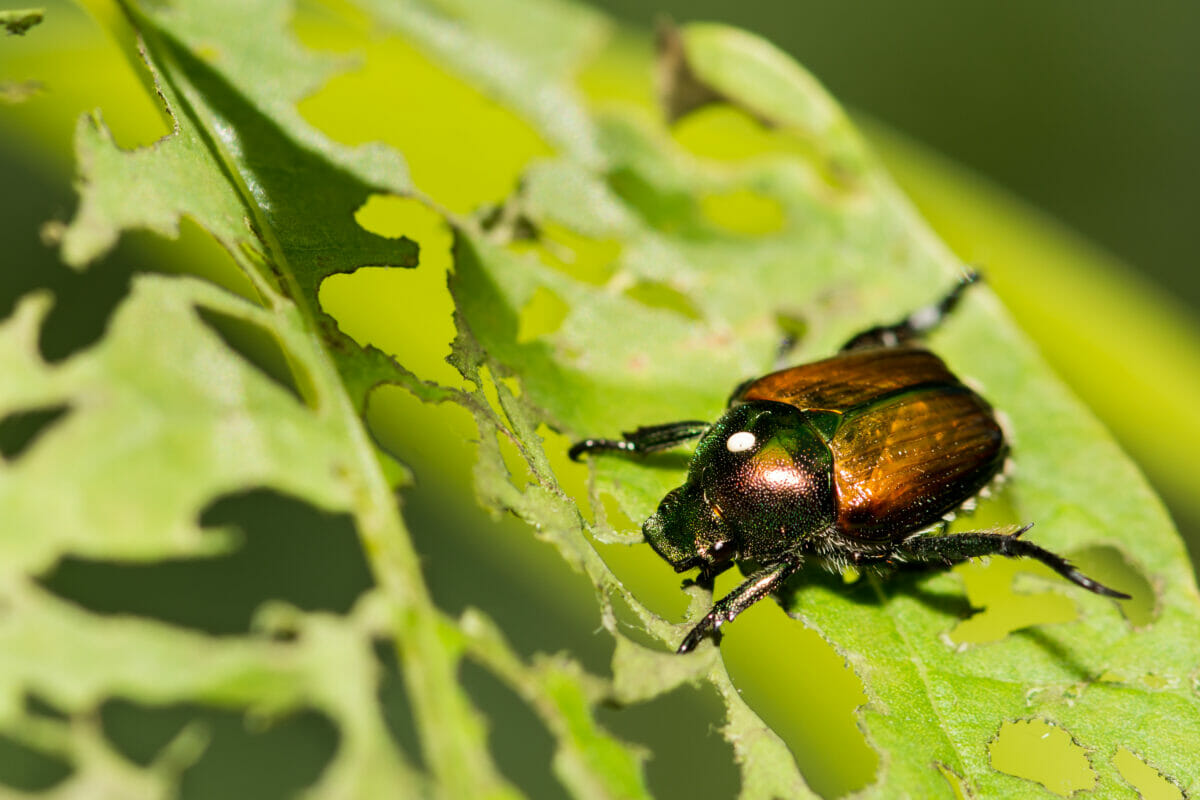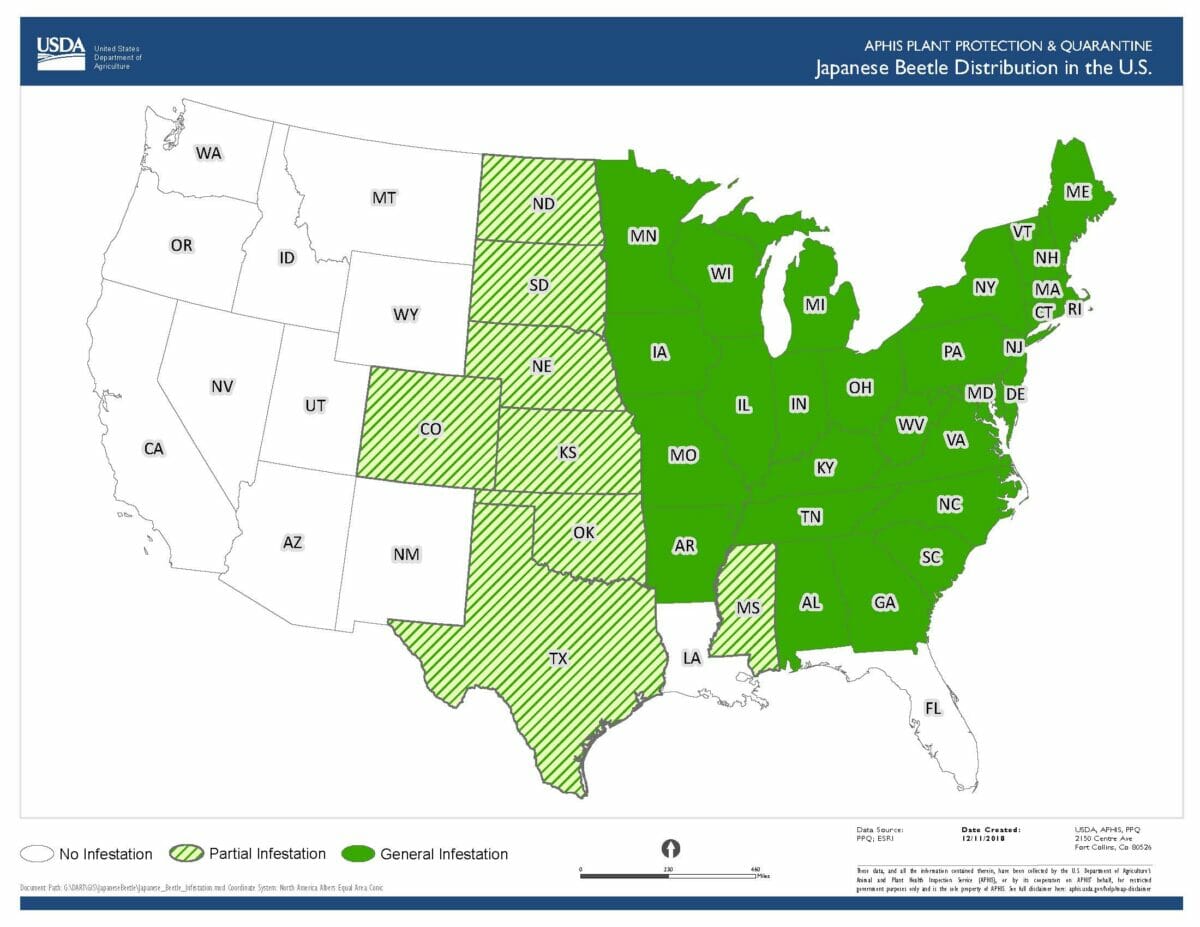Scientists have modeled the projected spread of the Japanese beetle in Washington state, but they say management and public engagement can alter the outcome.

With copper-colored wings and an emerald head, the Japanese beetle is pretty, but devastating.
Not native to the United States, the Japanese beetle was first detected on the East Coast in the early 1900s, and it began spreading across the country. The beetle has an appetite for more than 300 types of plants, including agricultural staples such as corn, hops, asparagus, cherries and more. The beetles eat plant leaves between the veins, leaving a cobweb-patterned mess behind. As of 2015, it was estimated that the US was spending more than $460 million annually to manage this pest.
Most states east of the Mississippi River have these beetles, and there have been infestations in some western states. A recent Washington State University study published in the Journal of Economic Entomology modeled the potential spread of the beetle across Washington state and found that, within two decades, if nothing is done to inhibit the beetle, it could be causing problems in all corners of Washington. The beetle’s first sighting in Washington was in the southern town of Sunnyside in 2020. Subsequently, the Washington State Department of Agriculture caught more than 20,000 beetles in the area.

Map of Japanese beetle distribution in the United States as of 2018, depicting established populations. (Map courtesy of USDA)
Gengping Zhu, research assistant professor in the Department of Entomology at WSU and lead author of the study, says that this research can inform people about where they are likely to see the beetle, hopefully enabling interventions to take place.
Both official management plans and public engagement can help curtail the progress of the beetle. States such as Oregon and California have had repeated infestations, but they have effectively prevented full-on establishment through swift management action.
Interventions can include things such as localized quarantines—making sure yard waste and other soils don’t travel to outside areas. At the federal level, the USDA Animal and Plant Health Inspection Service utilizes a nationwide quarantine, specifically designed to prevent the spread of the beetle from eastern states to western states through air travel.
Many states have reporting forms online, where people can document sightings of the beetle. In parts of the country where the beetles are already pervasive, other innovative solutions are taking off, such as this 4-H project that turned into a beetle-busting business.
Stopping the spread of the beetle is preferable and more economically efficient than trying to address it after it has taken over, says Zhu. Adult beetles are easier to spot, but it’s even better to find them before the beetles can get to adulthood. “That’s the perfect window to control this beetle, but it’s harder to detect the eggs,” says Zhu.
The spread of the beetle is often attributable to human activity. Humans unknowingly transport beetles or their eggs/larvae through soil, potted plants, yard waste or other debris.
That’s why engaging and educating the public about the spread of non-native species can make a difference, no matter where you live. Zhu says public involvement has been hugely helpful thus far and will continue to be critical for the successful management of this species.
Here in Minnesota, the University has had s verbal releases of the Winsome fly, which lays its eggs on the head of the Japanese beetle. The larvae burrow into and kill the adult JBs. They prefer females! This has already had a significant effect on JB populations in the target areas